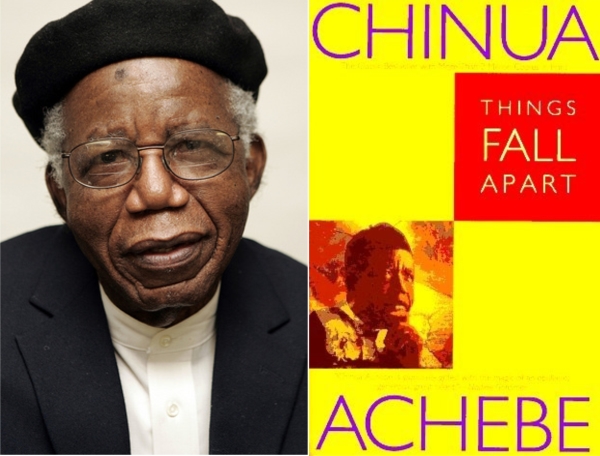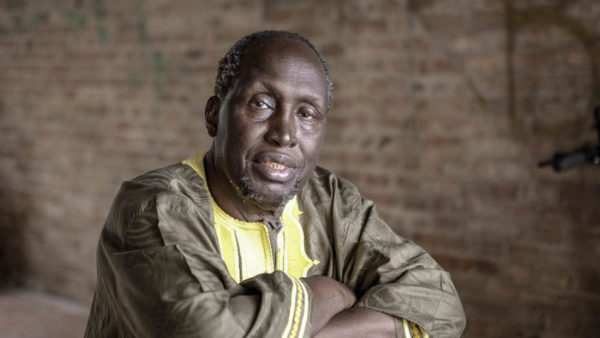Homage to Things Fall Apart @60 – Introduction by Krydz Ikwuemesi
Things Fall Apart, Chinua Achebe’s epic novel, is 60 years. Centered on the cultural conflict that developed in the mill of the colonial project in Africa, the novel’s content and essence remain very relevant in the “hopes and impediments” and in the totalizing dissonance that is at the heart of postcolonial realities in the continent.
Ridden with violence, corruption, war, hunger religious intolerance, and largely travestied democracies, postcolonial Africa approximates a fantasy land where anything can happen. The situation continues to evoke that uncertain note on which Achebe ends the novel, that frozen moment when authentic Africa yields to the glory and triumph of Empire, giving birth to a fleeting, but totalizing and conflicting hybridity that has no end.
While the situation calls for concern as it relates to the harsh realities of the human condition in these parts, it has also provided a creative resource for artists at various times and from different standpoints. To this extent, as Things Fall Apart attains 60, it is pertinent to pay homage to its continued relevance and the sagacity of its legendary author through this exhibition whose thematic visions draw from the novel and some of the social realities that resonate with its centralizing theme in postcolonial Africa.
Things Fall Apart, was perhaps written for a distinctive purpose, which is to tell a version of history that often tends to be ignored. His inspiration for penning down the story is summarized in his proverb: Until the lion tells his story, the tale of the hunt will always glorify the Chuu Krydz Ikwuemesi hunter.
And indeed, Achebe rightfully roared until the tale of the hunt was heard from the lion’s point of view. His ability to creatively portray the white men stripping the Africans of their agency is a metaphor of how the cultural agency of the modern African people is constricted by the ambitions of empire and colonialism.

This fact is captured in the decline of African culture in the face of colonialism, and the subtle prediction of the divided consciousness and dissonance that would ravage the continent in post-independence and beyond.
Okonkwo, the major character in the novel, personifies Africa because he possesses a combination of all traditional African values: he is strong, powerful, influential and hardworking, as vividly captured in the paintings of Okonkwo by TobennaOkwuosa and Olisa Nwadiogbu. His status, however, changes with the coming of the white man. And like Okonkwo’s influence, the autochthonous culture and tradition fade as the white man imposes more of his visions and worldview on the people.
Towards the end of the book, Okonkwo kills one of the white man’s court messengers, believing his people would unite and join him in fighting the outsiders. No one does, and in that instance, Okonkwo realizes just how much things have fallen apart. He hangs himself soon after and his death is the metaphorical death of the African spirit: political, religious, economic and otherwise.
Sadly, the politics of after the death of Africa’s authentic spirit is what plays out today as postcoloniality, with all its undying contradictions and conflicts.
Any wonder Achebe’s prophetic work continues to reverberate through generations, inspiring the creative instincts and talents of the gifted spirits. This year, Things Fall Apart attains 60, and to assert the continued relevance of the work, 15 artists from Africa have come together in this exhibition to pay homage to the novel and its illustrious
author, with works inspired by moments from the novel and some social issues they allude to.
Titled And the Centre Refuses to Hold: Homage to Things Fall Apart @60, the exhibition comprises works by Chuu Krydz Ikwuemesi, TobennaOkwuosa, Ato Arinze, George Odoh, Tony Nsofor, Anthony Polo, Nathalie DjakouKassi, OlisaNwadiogbu, Akeem Muraina, Emma Mbanefoand ChinyereOdinukwe, Francis Ike, NnaemezieAsogwa, Benjamin Akachukwu, Obi Nwaegbe, IykeOkenyi, and Abigail Nnaji.
Reflecting the artists’ diverse background and experience, it is an eclectic collection including drawing, paintings in various media and technique, sculptures, installations, and mixed media.
The eclecticism is also vividly embodied in the thematic thrust of the works, as they address issues directly from iconic moments in the novel and from the African experience in the colonial and postcolonial periods. Thus social issues relating to religion, politics, intolerance, war, culture and (under)development are part of the creative resource in most of the works. The exhibition, therefore, is a celebration of postcoloniality in Africa, with Things Fall Apart as the centralizing spin-off.
For instance, works by Benjamin Akachukwu take a totalizing stand on conflict and dissonance as they harness the accidents of the tie-dye technique as a basis for paintings that literally reflect beautiful chaos in their forms. Holistically, they evoke the divided conscious that yawn at every interaction of our collective life and history.
The same metaphorical use of colour language is to be found in the works of some other artists like Chinyere Odinukwe, and Francis Ike where message depends more on colour than on the visuality of form. Beyond a general celebration of the contradictions of the postcolonial through their personal idiolects of colour, the artists explore diverse themes.
While Akachukwu visualizes conflicts, violence and divided consciousness in his Forms from My Skies series, Odinukwe’sOsondu and I Shall Wait Here present the dilemma of contemporary Africa where citizens are caught between the call for patriotism and the often overwhelming desire to run across the ocean in line with the counter-penetration of the West which now approximates and redefines slavery.
We find a corollary to this in Nwadiogbu’s Owners of the Land or Heavers of Wood, a work which refers to neo-colonization and the perpetuation of apartheid in other means and beyond its birthplace. That Africa and the black man are now subject of a twin-colonization is not in doubt.
While black Africa is still colonized by the West through the soft powers of culture and economics, on one hand, it is also a subject of colonization from inside through the exertions, caprices, and greed of corrupt leaders and politicians. Tobenna Okwuosa’s Black Man, in its content and iconography, captures this situation in its political, social and religious ramifications.
In another work, Okwuosa pays tribute to Achebe as a master storyteller through the imposition of the author’s portrait in the painting. Igbo uli traditional script is also explored and deployed at various locations in the work. It shares the same vision with the clay portrait by Ato Arinze which cleverly celebrates the person of Achebe and his great work.
Arinze also extends the essence of Achebe work in the overt and covert imageries in his other terracotta piece where the politics of (under)development is part of the centralizing interest. It is perhaps, this menace of underdevelopment that worries Nathalie Djakou in her work as it does Obi Nwaegbe in his concern with mundane realities in his impressionist and poetic paintings.
The Last Supper by Chuu Krydz Ikwuemesi and Tony Nsofor’s both reminds us of the hopes and impediments of the 20 century with all its tormenting and tormented characteristics. While Nsofor’s painting laments the failed aspirations and possibilities in the virtuosic orchestration of colour and form, Ikwuemesi captures the apocalyptic
tendencies of the last years of that century and the beginning of this century through the symbolisms of The Last Supper. Comprising curious otherworldly faces, it is not the traditional last supper, but one in which the whole of humanity is at the table, a supper where the past and the future interrogate each other.
Besides these works, there are others which celebrate moments in the novel, not necessarily from the angle of illustration, but in a bid to inscribe the novel as a datum that enables us to come to terms with the past, present and future of Africa, as it relates to her religious, cultural and political aspirations and realities.
Nwadiogbu’sEzinne, Ikwuemesi’sMkpuluMma, George Odoh’sEzimma are all good examples. At the level of content, they provide interesting opposites to the visions of Iyke Okenyi, Francis Ike and Abigail Nnaji who seem to grapple with existential and historical issues in their works.
While Okenyi’s sculpture aspires to monumentality as a way of amplifying the meaning and evocative power, Ike and Nnaji’s paintings rely on subject matter and form as the roadmap to experience, as they straddle memory, desire and the conflicting grounds in-between.
In all, the epochal, historical traveling exhibition and the Art Talk planned to take place at SOAS, the University of London in 2019 all makeup one composite celebratory statement in honour of a novel whose relevance and influence continues to cut across generations.
Like the blind men and the elephant, the artists engage the novel as a creative resource from individual perspectives, employing media and techniques as the spirit moves them. What unites them in their finding and resulting works is, perhaps, the novel’s capacity as a source of metacreativity for artists and scholars and as a historical and anthropological reference to which we must all return now and again.
– Chuu Krydz Ikwuemesi is an Artist, Art Historian and Associate Professor of Fine Art, University of Nigeria, Nsukka.
Kelechi Deca

Kelechi Deca has over two decades of media experience, he has traveled to over 77 countries reporting on multilateral development institutions, international business, trade, travels, culture, and diplomacy. He is also a petrol head with in-depth knowledge of automobiles and the auto industry.






